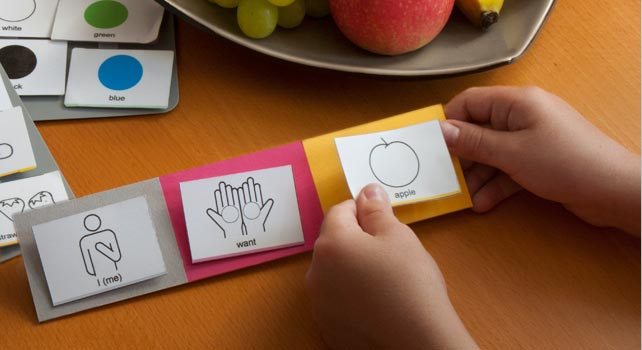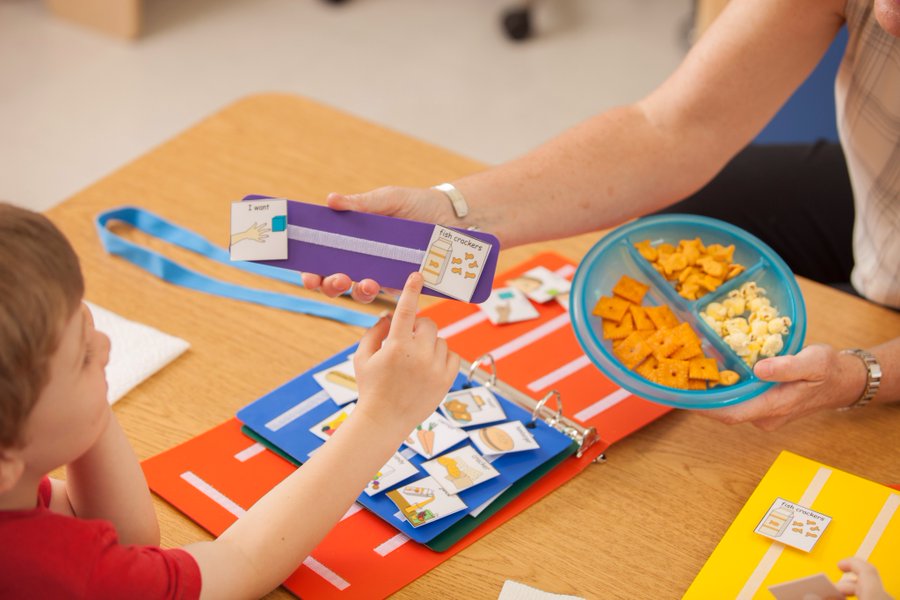Picture Exchange Communication System (PECS) is a form of Alternative and Augmentative Communication (AAC) system that is used as an early intervention method in the developmental process of kids with ASD.
In this analysis, I would like to talk about how the PECS system works, how it is an accessible tool and how it fits into the models of disability.
Autism spectrum disorder in kids
Autism Spectrum Disorder or ASD is a complex neuro-developmental disorder affecting approximately 1 in 59 children. Individuals with ASD face significant challenges with the development of important skills such as – verbal and non-verbal communication, social, behavioral etc. It is a condition that affects individuals in different ways and to varying degrees. Several individuals face problems with motor and sensory skills, and other important skills that are important for them to carry out day-to-day tasks and be self-reliant.
Studies show that instead of humans, most kids with ASD find it comfortable to interact with inanimate objects- like digital devices, toys etc., which opens up avenues to come up with creative ways to promote the developmental process in these kids.
Augmentative and Alternative Communication Systems
Augmentative and Alternative Communication (AAC) systems is a class of Assistive Technologies, that encompass communication methods used to aid individuals encountering challenges in the formation or comprehension of spoken or written language. AAC includes various types of systems like sign language, picture cards, speech generating devices etc. Its primary goal is to enable the user to communicate interactively in the most effective and efficient manner.
What is PECS and how accessible is it?

Visual symbols such as drawings and photographs prove to be very effective in the learning process of kids with ASD. A very well known picture based intervention system introduced by the Delaware Autism Program is the Picture Exchange Communication System (PECS), that promotes improved communication by the means of pictures. It is a great tool that aids kids facing challenges with verbal skills, to communicate without words. PECS is used in a variety of settings and ways- it allows kids to make choices and communicate their needs. The kids are taught to provide a picture reference of the desired item in exchange for that item. This slowly motivates them to initiate a communicative act within a social context. Eventually, the kids learn to sequence sentences using the pictorial references by placing them on sentence strips. In this system, the kids learn to communicate by progressing through six distinct steps- How to communicate, Distance and persistence, Picture discrimination, Sentence structure, Answering questions and Commenting; steps that have increasingly complex forms of communication. The power of this method is that it places minimal cognitive load on the child.
PECS is a fairly inexpensive, low tech language intervention system. To make its use even more affordable, one could just use a binder to store picture cards that have hand-drawn images on them or magazine cuttings glued on the cards with labels. One could also laminate the frequently used cards for longevity. The cards could be separated into different categories so they’re easily used by the kids. Also, commercial PECS card decks may not contain specific images of a child’s favorite items causing frustration, in which case, personalized cards may be beneficial.
To use the PECS system, the listener doesn’t need special training. It is a very simple matching system that makes communication easier, making it fairly usable and one that has utility. Starting with PECS as an intervention system can help avoid creating a negative emotional history related to speech. However, it is difficult to keep pictures and notebooks around all the time without losing or forgetting them, which hinders its usability.
On the accessibility front, many individuals start with the ability to point out what they want, so there’s a high possibility of success. However, as an initial requirement, the kid needs to be able to communicate their needs by using the right pictures, learning which could take a while.
There are electronic PECS devices which offer the next steps in communication. These devices are typically durable electronic screens that can be used in the same way as picture cards, hence making the PECS system a compatible form of intervention.
Models of disablement
Models of disability are helpful in understanding the process of how a person loses certain abilities, and help us identify the correct interventions to address those losses. They define the underlying impairment and ultimately provide a basis upon which strategies can be devised to meet the needs of people with disabilities.
Currently, PECS as an intervention system for individuals with ASD, fits into the medical model of disability. However, there is a wide call for the social model of disability to be reinvigorated for Autism. It focuses on how it could be helpful to remove social barriers by changing non-autistic people’s attitudes towards autism through encouraging a positive language, and by bringing about a positive change in the idea surrounding the concepts of autism. For example, you’re a teenager with learning difficulty who wants to live independently in your home, but you don’t know how to pay the rent. The social model recognizes that with the right support on how to pay your rent, you can live the life you choose.
References:
- https://www.cdc.gov/ncbddd/autism/data.html
- Sampath, H., Agarwal, R., & Indurkhya, B. (2013). Assistive technology for children with autism – lessons for interaction design. Proceedings of the 11th Asia Pacific Conference on Computer Human Interaction – APCHI 13 . doi:10.1145/2525194.2525300
- https://www.scope.org.uk/about-us/social-model-of-disability/
